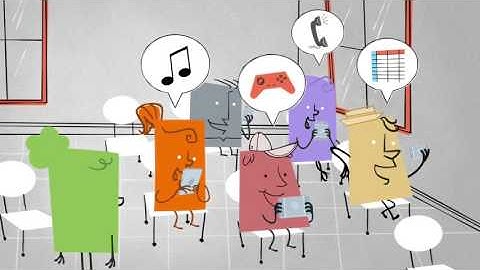Suggest a new Definition Show
Proposed definitions will be considered for inclusion in the Economictimes.com Marketing
Definition: The five forces model of analysis was developed by Michael Porter to analyze the competitive environment in which a product or company works. Description: There are five forces that act on any product/ brand/ company: 1. The threat of entry: competitors can enter from any industry, channel, function, form or marketing activity. How best can the company take care of the threat of new entrants? 2. Supplier power: what is the power of suppliers in this industry? How will their actions affect costs, supplies and developments? If there are a few suppliers, power is in their favour and cost of switching may be prohibitive; vice versa for a situation with lots of suppliers. There may be too many buyers from too few suppliers. 3. Buyer power: there may be few buyers for the product, which could mean that they would drive down prices and dictate business terms. What is their effect on the business? If there are many buyers, sellers could decide not to supply to a few, because other buyers will step in. 4. Threat of substitutes: can another substitute the product? Tea for coffee; email for fax? What is the likely possibility of this and what is its impact? 5. Competitive rivalry: all the four forces may come together to produce this force. All the resources at a company's disposal may be put in to maintain market shares and sales. How intense is competitive action, can it be countered?
1. Type of question in which all possible choices are given in the questionnaire is ________? 2. In the marketing process, the first step is to. 3. Changes made in product characteristics such as quality, style, and features are
called 4. ‘non-probability sample’ includes_________? 5. In the existing market strategy of introducing a new product is classified as_______. 6. logistical network that moves finished product from the company to resellers and so to finish users are assessed as_______? 7. analysis that is employed to explain the market
potential of any market giving is best classified as 8. Advertising and personal selling can be referred to as_______ In marketing strategy. 9. ‘Family Dollar’ is evaluating one location out of the many by checking near areas conditions
is associate as______. 10. Arrangement of various market performance measures as a single display to monitor results is known as as_____. 11. “________ fever” results from the
convergence of a good vary of forces within the marketing environment—from technological, economic, and demographic forces to cultural, social, and political ones. 12. The ______________________ consists of the actors and forces outside marketing that have an effect on marketing management’s ability to develop and maintain palmy relationships with its target customer. 13. Which of the subsequent terms best describes the environment that includes the forces getting ready to the corporate that has an effect on its ability to serve its customers—the company, suppliers, promoting channel companies, client markets, competitors, and publics? 14. In a company’s microenvironment all of the following would be considered EXCEPT: 15. Which of the subsequent BEST describes the environment that contains the larger social group forces that have an effect on the company-level environment—demographic,
economic, natural, technological, political, and cultural forces? 16. In a company’s macro environment all of the following would be considered to be a part EXCEPT: 17. Finance,
analysis and development, purchasing, and manufacturing are all activities that are a part of that element of the microenvironment? 18. The company’s mission, objectives, broad strategies, and policies are set by __________ management. 19. ________________ are an important link within the company’s overall “value delivery system” since they supply the resources required by the company to produce its merchandise and service.
Which of the following terms best describes the environment that includes the forces close to the company that affect its ability?Which of the following BEST describes the environment that contains the larger societal forces that affect the company-level environment- demographic, economic, natural, technological, political, and cultural forces? D. Networked environment.
Which of the following is part of a company's microenvironment?Six components of micro environment are: Company, Suppliers, Marketing Intermediaries, Competitors, General Public and the Customers.
Is the larger societal forces that affect the whole microenvironment competitive demographic economic natural technological political and cultural forces?The macroenvironment consists of the larger societal forces that affect the microenvironment—demographic, economic, natural, technological, political, and cultural forces.
|

zusammenhängende Posts
Werbung
NEUESTEN NACHRICHTEN
Wie lange hat der Vermieter Zeit die Kündigung zu bestätigen
1 Jahrs vor . durch EphemeralProceedingsWerbung
Populer
Werbung

Urheberrechte © © 2024 de.apacode Inc.



















